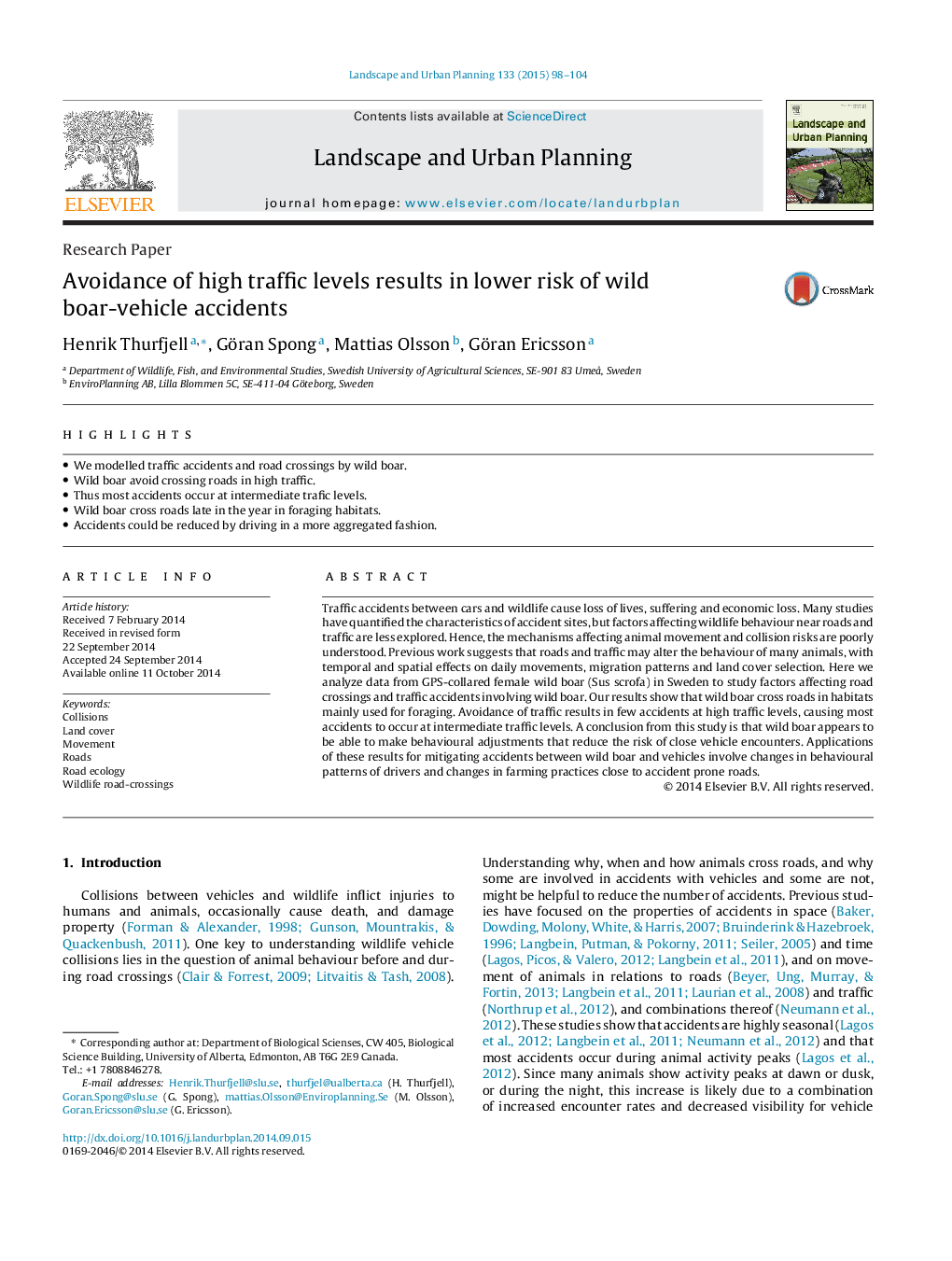| Article ID | Journal | Published Year | Pages | File Type |
|---|---|---|---|---|
| 1049205 | Landscape and Urban Planning | 2015 | 7 Pages |
•We modelled traffic accidents and road crossings by wild boar.•Wild boar avoid crossing roads in high traffic.•Thus most accidents occur at intermediate trafic levels.•Wild boar cross roads late in the year in foraging habitats.•Accidents could be reduced by driving in a more aggregated fashion.
Traffic accidents between cars and wildlife cause loss of lives, suffering and economic loss. Many studies have quantified the characteristics of accident sites, but factors affecting wildlife behaviour near roads and traffic are less explored. Hence, the mechanisms affecting animal movement and collision risks are poorly understood. Previous work suggests that roads and traffic may alter the behaviour of many animals, with temporal and spatial effects on daily movements, migration patterns and land cover selection. Here we analyze data from GPS-collared female wild boar (Sus scrofa) in Sweden to study factors affecting road crossings and traffic accidents involving wild boar. Our results show that wild boar cross roads in habitats mainly used for foraging. Avoidance of traffic results in few accidents at high traffic levels, causing most accidents to occur at intermediate traffic levels. A conclusion from this study is that wild boar appears to be able to make behavioural adjustments that reduce the risk of close vehicle encounters. Applications of these results for mitigating accidents between wild boar and vehicles involve changes in behavioural patterns of drivers and changes in farming practices close to accident prone roads.
